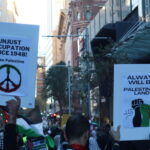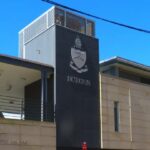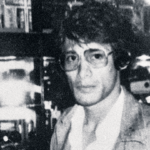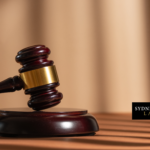Drop Appeal Against Racial Discrimination Ruling: An Interview with Professor Gracelyn Smallwood
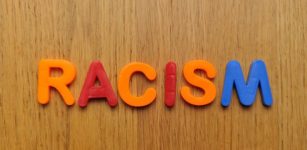
Cameron Doomadgee died in police custody on Palm Island on November 19, 2004. The 36-year-old Indigenous man was arrested for being drunk and disorderly. Soon after being detained, he died from massive internal injuries.
After the incident, Palm Island residents were critical of authorities for failing to remove Sergeant Chris Hurley, the arresting officer, from the island. He was later charged over Mr Doomadgee’s death, but an all-white jury acquitted him of manslaughter in 2007.
During the trial, Hurley claimed he’d had a scuffle with Mr Doomadgee, which resulted in a fall. However, the Crown alleged the sergeant had kneed the detained man in the stomach, causing severe damage to his liver.
Soon after Mr Doomadgee’s death, a post-mortem was conducted. The pathologist compared his injuries to those of plane crash victims. He suffered broken ribs, a ruptured spleen and his liver was so damaged it was almost split in two across his spine.
Palm Island Unrest
On the day the autopsy reports were released, Palm Island local Lex Wotton led residents on what authorities have described as a riot. However, Indigenous residents refer to the incident as resistance in the face great injustice.
During the unrest, Palm Island residents marched from the town square and burnt down the police station and courthouse. Queensland’s then premier Peter Beattie responded by declaring a state of emergency and flew in the riot squad.
Mr Wotton was later charged with inciting a riot. He was sentenced to six years in gaol in September 2008 and served 19 months before being released on parole.
A breach of the Racial Discrimination Act
In 2014, Wotton launched a class action against the Queensland government over its handling of the death of Mr Doomadgee. He claimed Palm Island residents had been racially discriminated against during the unrest.
Mr Wotton’s legal team argued that police had contravened section 9(1) of the Racial Discrimination Act 1975, as they had conducted themselves differently because they were dealing with an Aboriginal community.
Ruling in favour of the class action
In December last year, Federal Court Justice Debbie Mortimer found that the Queensland Police Service (QPS) had indeed acted with unlawful discrimination when failing to suspend Sergeant Hurley after Mr Doomadgee’s death.
It was further found police targeted the Aboriginal community with a “disproportionate show of force” when protesting the death. The court ruled in favour of the class action and awarded Mr Wotton $220,000 in damages.
The campaign to stop the appeal
However, the Queensland state government and the QPS have filed an appeal against this landmark trial. They’re calling for the findings to be set aside, claiming they were not supported by the evidence.
Indigenous health campaigner Professor Gracelyn Smallwood launched an online petition this week, calling for the Queensland premier Annastacia Palaszczuk to revoke the appeal. The petition has already received overwhelming support with close to 17,000 signatures.
Ms Smallwood is professor of nursing and midwifery at Central Queensland University and adjunct professor in the Faculty of Medicine at James Cook University.
Sydney Criminal Lawyers® spoke with Professor Gracelyn Smallwood about the campaign to stop Queensland authorities appealing against this landmark discrimination case.
Cameron Doomadgee died in a police cell on Palm Island in November, 2004. What happened to Mr Doomadgee?
He was a young man and he’d had a few drinks. He’d been selling crabs, after he went crabbing. And he was singing a song called “Who Let the Dogs Out.”
He actually witnessed Sergeant Hurley and an Aboriginal Police Liaison Officer arresting a couple of brothers. And he made a comment to them that black police shouldn’t be locking up black people. They got a bit offended. And of course, the song “Who Let the Dogs Out.”
So they took him into custody for disturbing the peace. One hour after he was taken into custody, he died of horrific wounds. Witnesses had seen him before he went into custody – how healthy and jovial he was.
Residents of Palm Island accused Sergeant Chris Hurley of murder. He was charged over Mr Doomadgee’s death, but was later acquitted of manslaughter.
What do you think about Hurley’s acquittal?
Absolutely disgraceful. I never missed one court case, or one inquiry. This is my 45th year as a registered nurse. I’ve nursed in rural and remote communities, mining towns – all around the world – mostly as a trauma nurse.
The injuries were a busted portal vein, a severed liver, a mulched spleen, fractured ribs and cuts all down the side of our young man’s face. They had expert trauma people from down south identify that these horrific injuries are usually caused by plane crashes or car crashes – something much more traumatic than a slight fall.
So it was crystal clear, all the evidence that was coming out of the courts.
Hurley’s friend, another police officer, flew to the island. He had dinner and a beer with Hurley that night and questioned him about the death. Hurley changed the story that many times. And when the post mortem came out, he said that young Doomadgee was scuffling with him and those injuries had to have occurred in the slight fall.
Now if that’s the case, rugby league should be banned. And all heavy contact sports should be banned. I think Johnathan Thurston should have been dead a hundred times over.
We were all horrified that he was acquitted, when the evidence was crystal clear.
Following Mr Doomadgee’s death riots broke out on Palm Island. What actually sparked the riots?
I actually visited. I wasn’t physically on the island during the riots. I was fifteen minutes away in Townsville. But in saying that, once the post mortem was read out, the community went crazy, because they knew he was beaten to death. He was brutalised.
Hurley had a history of being violent, not only to the local Aboriginal community, but in the communities where he’d worked before.
They just went crazy. They might say riots, but we call it resistance. Our people have endured so much. And of course, the community went absolutely crazy, because they knew those injuries could not have been sustained from a fall.
And that’s why our resistance happened. The police station was burnt down. And the western media called it a riot. We called it our resistance.
And how did the authorities respond?
They acted like they were in the Middle East. They were ringing their families, saying goodbye. They were choofed off the island. Mostly, all the non-Indigenous people were choofed off the island. And they responded in a way that they feared for their lives.
Then later on, there were choppers. Police jumping out with their riot gear, like they were in the Middle East going to war. Laser guns – pointing them at children and women and the blokes. And it was like something in the Middle East, like they were going to war to fight ISIS.
That’s all been documented and been spoken about in the courts. Of course, Lex Wotton was gaoled and so were others, because of their participation in the riot.
But in saying all of that, the white community was well looked after. The police received bravery awards.
But if you were filming the police jumping out of the planes with their riot gear on, and with their lasers, and how traumatic that was for the entire community – not just the families where they pushed doors down and told them to get outside – it was all the community.
Over 2,000 people, saw these horrific scenes. And the police are saying that they were hard done by.
I mean, no one’s talking about the victims here, of what happened to young Doomadgee, of why people resisted. And the police and the non-Indigenous folks were choofed out, and they were well looked after.
Lex Wotton launched a class action in 2014 against the state over its handling of the death of Cameron Doomadgee. The Federal court ruled in favour of the class action in December last year.
What did Justice Debbie Mortimer outline in her findings?
Well she clearly identified that it was racially discriminatory of how the police handled the community. Because, let me tell you, this wouldn’t have happened in Lane Cove, or Toorak in Victoria, or any mainstream society in Australia, where there’s mostly non-Indigenous people. Because there’d be a public outcry and the commissioner of police would have to be sacked.
There was so much crystal clear evidence that our people’s human rights were violated and they were racially discriminated against. Justice Mortimer clearly identified that in her findings of the court case in the Federal Court.
How did the Queensland authorities respond to the Federal Court’s ruling? And what do you think is behind this response?
Of course, they were horrified. Because Queensland has a reputation from day one about its brutality on the community, especially on Indigenous communities. The Queensland government has always been very paternalistic in their attitude towards Aboriginal and Islander people.
And of course, they would have been horrified, because they’ve got away with so much by an all-white jury letting Hurley go on a not guilty charge. Then the bravery awards came out. And Hurley goes down and is promoted and works as a sergeant on the Gold Coast.
Of course, Queensland would have rebelled against this, because their true colours are now starting to open doors to the general public from this conspiracy of silence.
Why would they agree with the truth and the findings of this court case, through the Federal High Court? Because all along they have been suppressing the truth and getting away with all of this conspiracy of silence with the general public.
And now the general public are starting to ask questions about racial discrimination against First Nations Australians, in particular this case. They’re starting to find out the true history and many non-Indigenous Australians are absolutely horrified.
Reading the comments of the close to 17,000 signatures, a large percentage of those signatures are not from black folks, they’re from white folks, and that’s why Queensland would have been horrified.
And they’re trying to challenge the highest court in the land, the Federal High Court, and basically say they’re wrong and Queensland was right, even though, the evidence is crystal clear that our people’s human rights were violated and they were racially vilified.
You recently launched an online petition to stop the appeal that’s been lodged by the Queensland government and the QPS. It’s already garnered close to 17,000 signatures.
What do you think about the response so far? And when are you presenting the petition to premier Annastacia Palaszczuk?
It’s nearly 17,000 in 48 hours. Very pleased. When we hit 25,000, we will then be presenting it to the Queensland premier.
We believe that the turnabout on Lex Wotton and his mother and his wife – who are now going to receive a pittance, $220,000, because they should have received two million, with everything they’ve been through – we believe it’s because of that online petition.
And the majority of people that have signed that petition are non-Indigenous people. Because many of our people do not have IT, especially in rural and remote communities and they’re not into the petition.
So we’re very pleased about the response. And it gives some light at the end of the tunnel and some hope that there are non-Indigenous people – who once they’ve been told the truth – are absolutely horrified at the brutality of not only the Palm Island people, but what’s been happening to First Nations Australians since January 26, 1788.
And I believe that once the truth comes out that we can reconcile on an equal manner.
So Lex Wotton wasn’t going to receive the damages that were awarded by the Federal Court?
Absolutely. The attorney-general, who is married to a police officer in Queensland, went ahead and gave permission for an appeal against any compensation to Lex and any of his class action for the Palm Island people. I mean what a conflict of interest, no transparency.
And both the premier and minister of Aboriginal affairs have maintained they basically didn’t know anything about it. So here’s an attorney-general married to a police officer, who goes ahead with all that power.
You’ve even got the federal Labor politicians that went against them, as well as the independent Billy Gordon who actually made a statement that he was sickened that the appeal was going ahead. And that it just opens all new wounds and we were just settling the dust from this horrific deal that happened on Palm Island in 2004.
We want to get 50,000 signatures. And we also want politicians accountable because they’re not god and they can’t just go ahead and do what they want to do in the interest of themselves.
And in particular, the attorney-general’s husband is a police officer. So she should have had no say whatsoever whether the appeal went through or not, because of the lack of transparency and a conflict of interest.
When is the appeal case set to go before the court? And how likely do you think it will be that the government and police revoke the appeal?
There’s no date set yet. And because of this political turmoil that we’re doing with the petition, they haven’t made a date.
But you can be assured the Palm Island people have a brilliant human rights legal team. They’ve been there since day one, fighting for Lex Wotton and fighting for the Palm Island community.
I’m purely the human rights activist. My father was sent to Palm Island as a stolen generation. And I’ve got strong connections with Palm Island, because of the brutality and what has gone on under paternalistic legislation over the years.
And lastly, in 1991, the Royal Commission into Aboriginal Deaths in Custody was undertaken. It made 339 recommendations, most of which were never implemented. By 2013, a further 365 Indigenous people had died in incarceration. And today those numbers continue to increase.
Why are Aboriginal people continuing to die in custody? And what do you think needs to happen?
It’s crystal clear: paternalism, institutional racism and thuggery from the police and the government. It’s very clear when Aboriginal people go into gaol, they stand a high chance of being killed, or just dying in custody with no help.
The 339 recommendations in 1991, very little were implemented. And if one of the key recommendations, that intoxication should be decriminalised, if that was implemented, Mulrunji would have been alive today.
Many of our people that were killed in custody, or died in custody, were highly intoxicated or had drug misuse and they lacked human services and health because of the bullying and racism that goes on.
So it’s got to stop and governments have to get their heads out of the sand and start to realise that all the thuggery within the correctional centres and police force has to stop.
The people that are employing these thugs should all be sacked. Because most people that are employed in correctional centres are non-Indigenous and most people that are incarcerated are Indigenous people. We’re incarcerated up to 14 times more than white Australians. And there’s been more deaths in custody since the 1991 Royal Commission.
It’s not rocket science how to stop it. You’ve only got to have a look at what happened at Don Dale and the Townsville Cleveland youth detention centre. And the young girl that died in custody, well, not taken to the hospital. Mr Ward who was roasted in a back of a van. And they were all in there for unpaid fines or drunkenness.
It’s just so appalling and so unbelievable. And this country goes to the United Nations and cans all the other countries that violate human rights against their own constituents. But in our own backyard, our people are living in third world conditions, suffering diseases that developing countries have eradicated and suffer so much brutality and racial discrimination. John Pilger did a documentary called Utopia and people couldn’t believe it.
So there are the recommendations of the Royal Commission into Aboriginal Deaths in Custody. There are recommendations in the National Aboriginal Health Strategy. Education recommendations are in the National Aboriginal Education policy. The removal of our children recommendations are in the Bringing Them Home report.
Very few of these recommendations have been implemented. If they were implemented, the gap would be closed and we could then move on with reconciliation with the truth.
Gracelyn thanks very much for speaking with us today. And I hope it all goes with the campaign and the appeal doesn’t go ahead.
Thank you.




